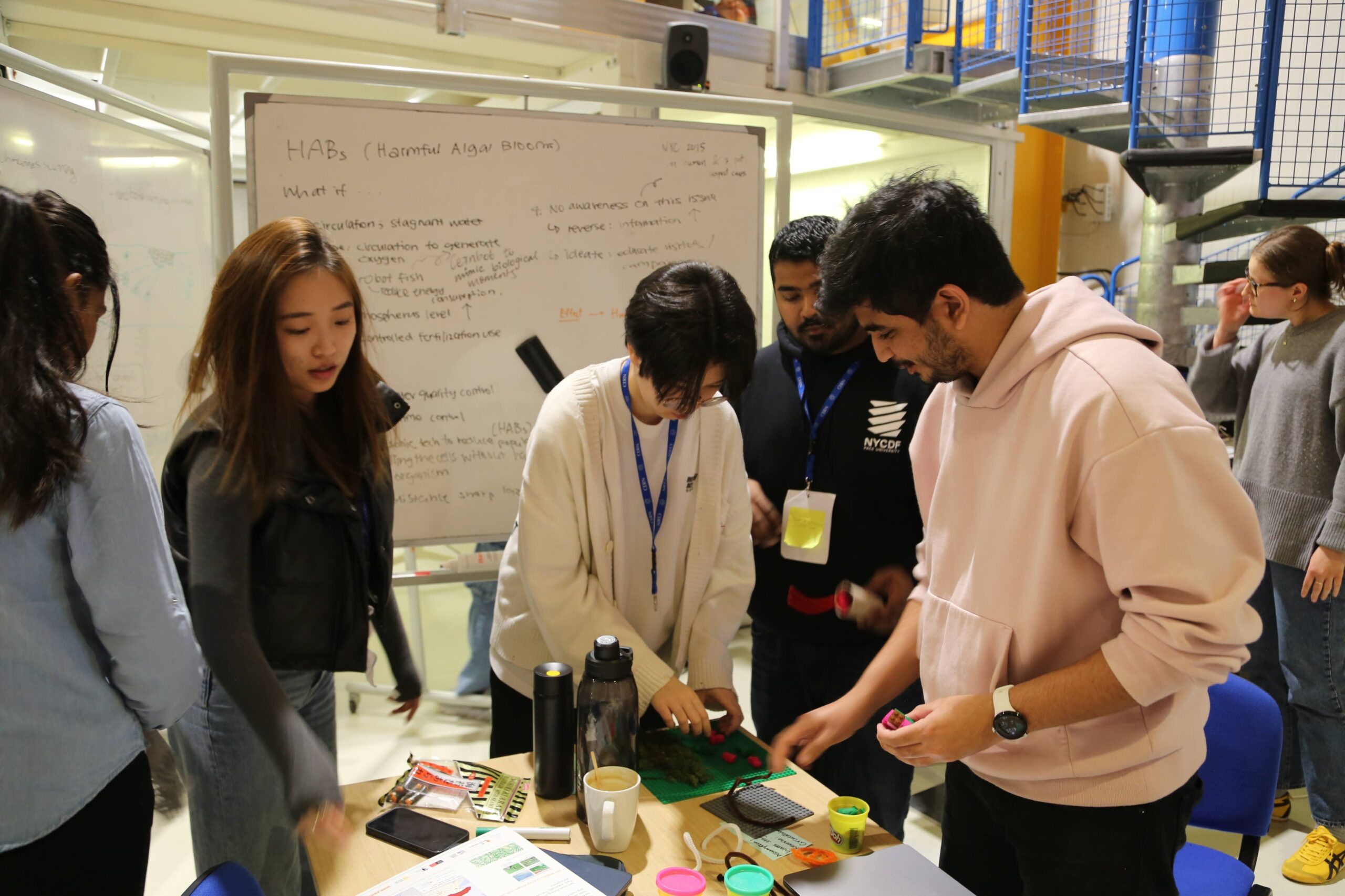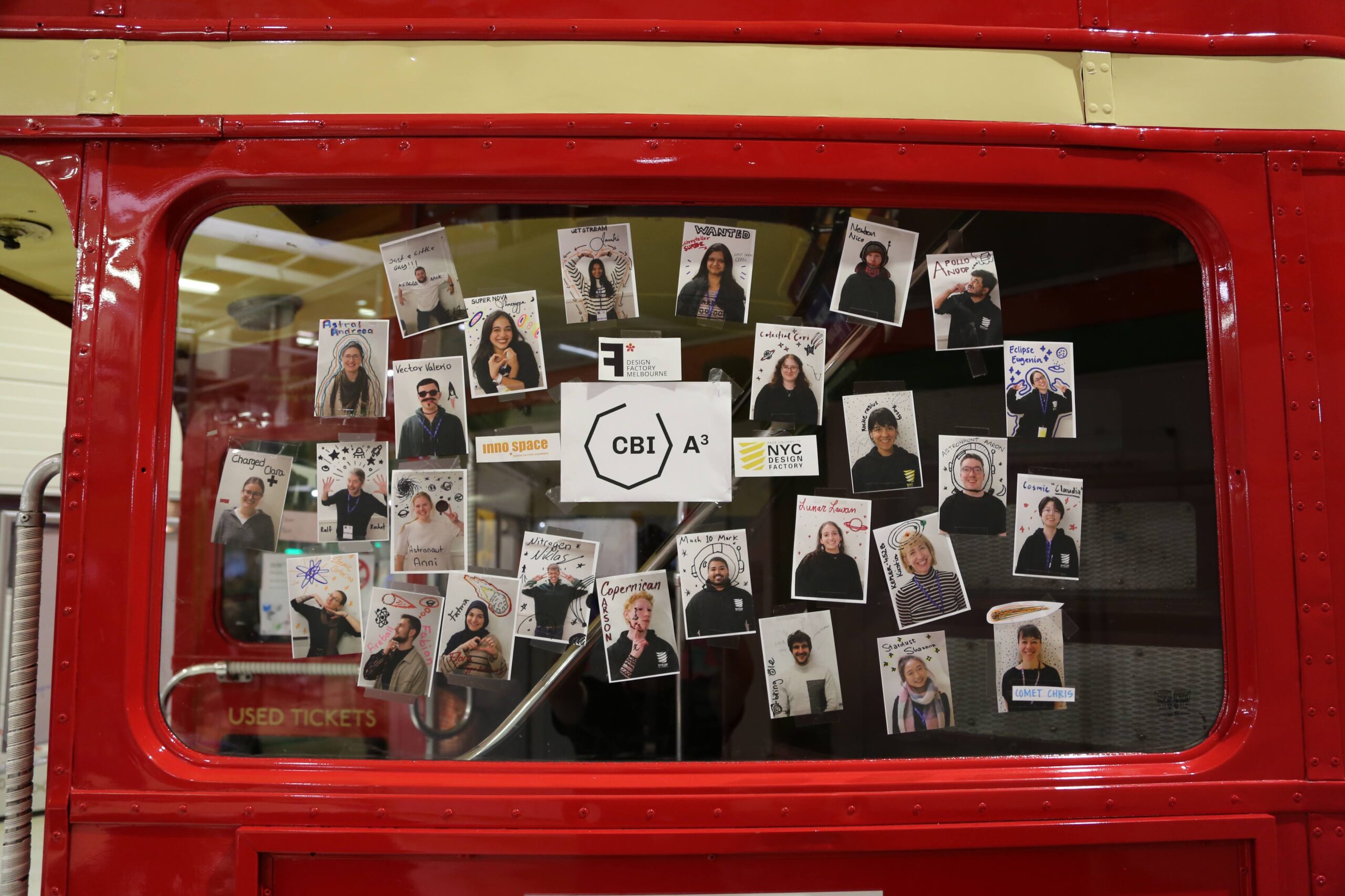WEEK 2 at IdeaSquare:
We write this with a million memories as we take the flight back to New York. Since our last update, we moved into Week Two of the two-week intensive at IdeaSquare, and what a ride it’s been! This week brought us back into our home teams, and it was a whirlwind of exploration, ideation, and a whole lot of fun.
Diving Deeper into the Problem Space
The second week focused on diving deeper into the problem space, using our opportunity cards as a springboard for innovation. We kicked things off with various ideation techniques and prompts, including Futures Thinking, “What Ifs,” and “How Might We” statements. Arup’s future predictions inspired us with four scenarios that encouraged us to innovate for different possibilities. Pablo introduced the “What If” framework, which pushed us to think outside the box. His theory of why “What If” matters was both fascinating and motivating. Armed with these tools, we used mixed methods to brainstorm interventions for our opportunity cards and employed “How Might We” statements to narrow our focus and guide our creativity.


Hands-On Prototyping and Creative Exercises
Dana joined us for a hands-on prototyping session, which included a playful yet insightful game of prototyping charades. This exercise helped us become more comfortable with prototyping as a process and emphasized its importance in slowing down, thinking critically, and refining our ideas. From that moment on, prototyping became a core part of our approach to exploring problem spaces.
Learning from CERN’s Knowledge Transfer
Midweek, we were introduced to CERN’s Knowledge Transfer division, which focuses on translating advanced technologies — such as accelerators and imaging systems — into practical applications for the public. This division spans fields like medical technology, aerospace, and sensory systems. We had the opportunity to speak with a program leader about their methods for identifying potential applications. These insights gave us a fresh perspective on the deep tech available and inspired new directions for our own projects.

Rapid Exploration and Prototyping Challenges
The highlight of the week was the rapid exploration and prototyping exercise. For each opportunity card, we had just one hour to ideate and build a solution. Imagine going from a complex problem to a tangible prototype in such a short time — it was nerve-wracking without a doubt, but also exhilarating. Through this intensive process, we learned to fail fast and recover faster. We became more comfortable generating ideas and turning them into actionable interventions, even under pressure.



From Twelve Ideas to Four Interventions
By the end of the week, we had distilled twelve opportunity cards into four possible interventions. Each one represented a unique and innovative approach:
-
- Microcycle: Transforming wastewater sludge into sustainable soil by melting microplastics with laser technology and reprocessing them into agricultural pellets.
- Fishy Go Around: Combating harmful algal blooms using robotic fish and CERN technology for energy-efficient water circulation and targeted reduction of harmful blooms.
- Sky Bloom: Creating a greener New York City through strategic green roofs and walls that absorb rainwater, reduce runoff, and incorporate better disposal policies and public education.
- Oyster of My Eye: Restoring oyster populations by removing heavy metals, improving water quality, and educating young minds to support sustainable growth.
Moving forward, our team will focus on developing two of these ideas: Microcycle and Oyster of My Eye.

Reflections on Two Weeks of Growth
“Learning can be so much fun!” That’s the biggest takeaway from our intensive two-week exploration. We delved into the world around us, uncovered exciting opportunities, and gained insights into the science and physics driving innovative solutions. Most importantly, we learned a lot about ourselves. We stepped out of our comfort zones, embraced the “What Ifs” of creativity, and took a deep dive into the “How Might We” questions that shaped our journey. Through it all, critical reflection became the foundation of our growth. By taking time to pause, rethink, and learn from our experiences, we started to uncover the true value of our efforts. It’s a process that takes time, but we’re making progress — and it’s been incredibly rewarding.
Landing Back in New York
Now, as we land at John F. Kennedy Airport, we’re met with a scene so different from Geneva. The hustle and bustle, the iconic yellow taxis, the endless night lights and skyscrapers — it’s a place brimming with opportunities. The two-week experience at IdeaSquare has been filled with challenges, eye-opening insights, and endless inspiration. Team Nexus is now ready to embark on our next journey: organizing our thoughts, building on our learnings, and creating solutions that could shape a better 2050. Cheers to what’s ahead!









Recent Comments